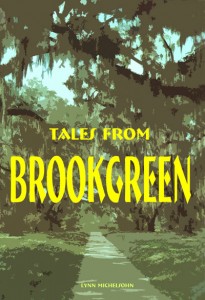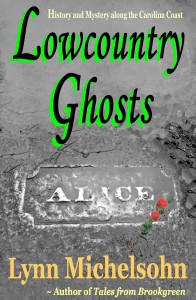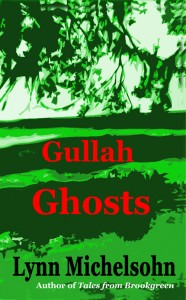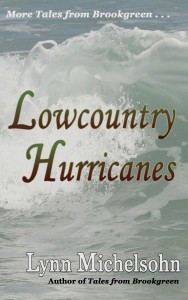The Hostesses at Archer and Anna Hyatt Huntington’s Brookgreen Gardens in the South Carolina Lowcountry

Paperback $12.95 (US).
Available from these booksellers.
Genevieve Wilcox Chandler and Cornelia “Corrie” Sarvis Dusenbury served as Hostesses during the 1950s at Brookgreen Gardens, the popular tourist attraction established by Archer and Anna Hyatt Huntington in the South Carolina Lowcountry during the 1930s. Lynn Michelsohn, Corrie’s cousin, retells the stories they told visitors in her book, Tales from Brookgreen. Here she introduces the Hostesses:
One of my greatest treats as a child was to spend the day with Cousin Corrie at Brookgreen Gardens in Murrells Inlet, South Carolina. It was here in the Carolina Lowcountry that Archer and Anna Hyatt Huntington had created the first American sculpture garden among the ancient moss-draped live oak trees of four former rice plantations: Brookgreen, Springfield, Laurel Hill and The Oaks.

Paperback $7.95 (US).
Available from these booksellers.
In those simpler days, visitors to Archer and Anna Hyatt Huntington’s Brookgreen Gardens turned off the narrow pavement of Highway 17, the King’s Highway, onto two parallel ribbons of concrete spaced far enough apart to support the wheels of a car. Visitors drove slowly along those concrete ribbons through the wooded deer park and past the island of Youth Taming the Wild to a sandy parking lot near the Diana Pool. There they left their cars in as shady a spot as possible and entered the Gardens on foot, with no admission fee or gatekeeper.

Paperback $7.95 (US).
Available from these booksellers.
After a leisurely stroll through the Live Oak Allee, with perhaps a detour into the Palmetto Garden, a peek inside the Old Kitchen, and a dip of the fingers into the cool water of the Alligator Bender Pool, visitors arrived at the low wide porch of a simple gray brick building. This structure had once housed the overseer when Brookgreen was a thriving rice plantation. Now it served as the Museum and the entranceway to two open-air galleries for small sculpture. Inside the Museum, the steady sounds of splashing water from the Frog Baby Fountain in the first gallery enhanced the feeling of sanctuary from the Lowcountry heat that could already be growing oppressive by mid-morning.

Paperback $5.95 (US).
Available from these booksellers.
This Museum was the Visitors’ Center of its day. Here two sturdy “sixty-ish” Southern ladies welcomed visitors. These two Hostesses were the only staff in evidence in the Gardens, other than an occasional groundskeeper trimming ivy. In the cool, dim interior of the Museum Miss Genevieve and Cousin Corrie sold postcards, gave directions, and told stories to visitors interested enough to ask questions about the Gardens.
Boxy glass display cases formed a counter along the front wall of the Museum. Mostly these cases held stacks of picture postcards. Black-and-white cards sold for five cents, sepia cards for ten cents, and colored cards for twenty-five cents each. Books and pamphlets about the Gardens were also for sale. Intermixed with all these lay other items, not for sale, that stimulated frequent questions and often lead to Miss Genevieve and Cousin Corrie’s stories.
Cousin Corrie, my first cousin one generation removed, was born Cornelia Sarvis Dusenbury in 1888 as her home state of South Carolina emerged from the chaos of Reconstruction. She spent much of her childhood at Murrells Inlet on the Carolina coast, and then worked for many years as a schoolteacher and librarian in Florence, South Carolina. In retirement Cousin Corrie returned to Murrells Inlet and joined Genevieve Wilcox Chandler, a writer, artist, and local historian, to become a Hostess at Brookgreen Gardens.
Miss Genevieve was just a bit younger than Cousin Corrie. She had come to Murrells Inlet with her family from Marion, South Carolina, but stayed, married, and raised five children here, often supporting them with her writings on local subjects after the early death of her husband. When Archer and Anna Hyatt Huntington created Brookgreen Gardens they asked her to become the Hostess.
During my visits to Brookgreen Gardens, Cousin Corrie and Miss Genevieve (as I called Genevieve Wilcox Chandler, using the traditional Southern form of address for a grown-up family friend) let me help them with their hostess duties, much to my delight. I also enjoyed playing hide-and-seek among the sun-dappled sculptures and looking for painted river turtles sleeping on logs floating in the old rice field swamps. I loved darting from one live-oak canopy to the next during summer thunderstorms. I especially thrilled at wading in out-of-the-way sculpture pools when no one was looking. But my very favorite activity was listening to Miss Genevieve and Cousin Corrie tell stories of Brookgreen and the Carolina Lowcountry to spellbound Garden visitors, myself included.
Each Hostess had her own distinct repertoire; one never encroached on the other’s territory. “Now you will have to ask Mrs. Chandler about that,” or “Miss Dusenbury can tell you that story,” were common responses to visitors’ queries. If one or the other of the ladies were absent that day, then the unlucky visitor left without hearing her special tales.
Miss Genevieve tended to cover historical figures and folktales. She had collected local stories for “Mr. Roosevelt” and the W.P.A. On the other hand, Cousin Corrie focused on hurricanes, family tales, and accounts of Confederate and Yankee conflicts on the Carolina coast. Her stories related more to her own personal experiences. Of course each had her own unique collection of ghost stories.

Available from these booksellers
I heard some of these stories repeated to countless visitors. Theodosia Burr’s descent down the rice island steps was a frequent favorite. Other stories I only heard once or twice and remember only in snippets, although I have often been able to fill in gaps from other sources. All these stories excited my interest in the historical figures and everyday people who came before us to these broad rice fields and wooded uplands that became Brookgreen Gardens.
In my mind these tales weave themselves together with the swaying Spanish moss, the sparkling splashing fountains, and the winding brickwork walls of Brookgreen Gardens to create visions of a timeless spirit forever living in the heart of the Carolina Lowcountry.
To read tales told by Miss Genevieve and Cousin Corrie, click on the stories listed in the website menu under “Carolina Lowcountry,” or . . . buy one of our Lowcountry books.
© Cleanan Press, Inc. 2004 – 2014
